- Savage Blog
- A Break Down of Different Firearm Action Types
A Break Down of Different Firearm Action Types
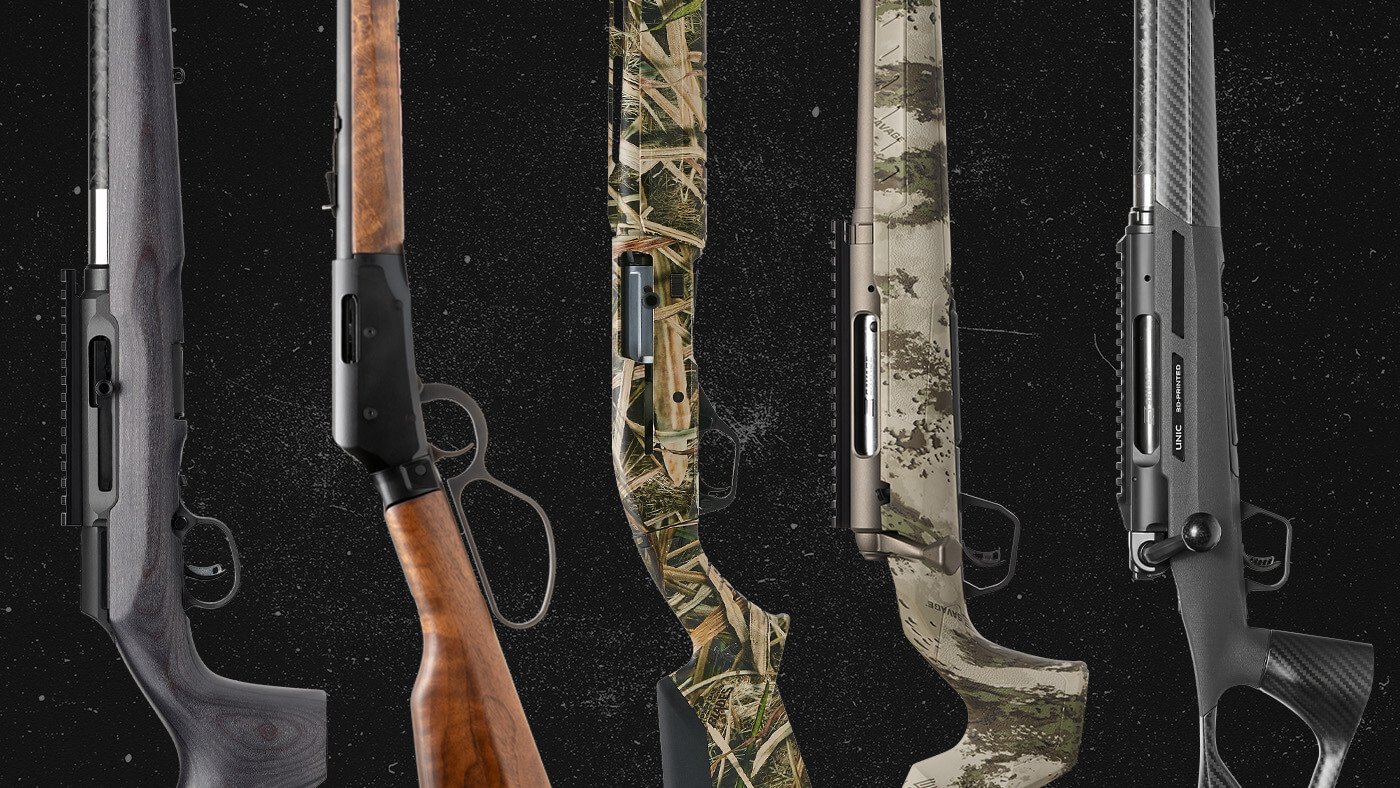
Let’s go back to basics for a minute and talk about the different firearm action types. If you’re new to the firearms world, the action type is essential to how your firearm works and impacts the way you shoot, clean, and store it. Let’s talk about various firearm action types in rifles and shotguns, and how each of them works.
Rifle
For simplicity, we’re going to discuss centerfire and rimfire rifles together in this section. Rifles load a cartridge into the chamber and shoot a bullet through a rifled barrel, which twist the bullet to provide stability during its flight. The way the cartridge is moved into the chamber depends on what type of action it has.
Bolt Action
Bolt action rifles are one of the most popular and time-tested firearms with a wide variety of applications in hunting and target shooting.

How It Works: Cartridges move in and out of the firearm’s chamber by manually turning a bolt and sliding it back. Traditional bolt actions require four manual motions to complete cycle the bolt – pull the bolt handle upward and backward to extract the spent case, then push the bolt handle forward and down to load a new cartridge and lock in the bolt. Bolt action rifles are sturdy and reliable due to the locking lugs on the bolt keeping the bullet seated securely in the chamber and sealing the chamber to optimize pressure and the velocity of your round as it heads down range.
Feed Style: Magazine or single shot
Handedness: Right or Left
Advantages: Accuracy, caliber options, configuration variety, simple, rugged, easy to clean
Safe Storage: Remove the bolt
Example: Model 110, Axis, B Series, Mark, 93/93R17, Rascal
Straight-Pull
Technically, straight-pull rifles are a special sub-set of bolt actions, but they’re special enough to warrant their own discussion. Straight-pull rifles have significant applications in hunting – especially where quick follow-up shots may be needed like driven hunts for hogs, big game, or predators to name a few. They’re also gaining popularity in the target shooting and competitive shooting communities.

How It Works: Like traditional bolt actions, straight-pulls work by moving cartridges in and out of the firearm’s chamber by manually moving a bolt. The difference between them is the motions required to cycle the bolt and the locking mechanisms. A straight-pull only requires two motions – backward to extract the spent case, and forward to load a new cartridge. Instead of locking lugs, straight-pulls need a different type of locking mechanism because there is no upward and downward lockup motion. There are a variety of locking mechanisms for straight-pull actions, but Savage straight-pulls use a robust lock up called Hexlock.
Feed Style: Magazine
Handedness: Right or Left, with an ambidextrous bolt handle. Right-side shell ejection.
Advantages: Accuracy, speed, caliber options, configuration variety, rugged, easy to clean
Safe Storage: Remove the bolt
Examples: Impulse
Semi-Auto
Semi-auto rifles are incredibly popular for their versatility, modularity, and speed. Semi-auto rifles can be used for target shooting, competitive shooting disciplines, plinking and some hunting (depending on local regulations).
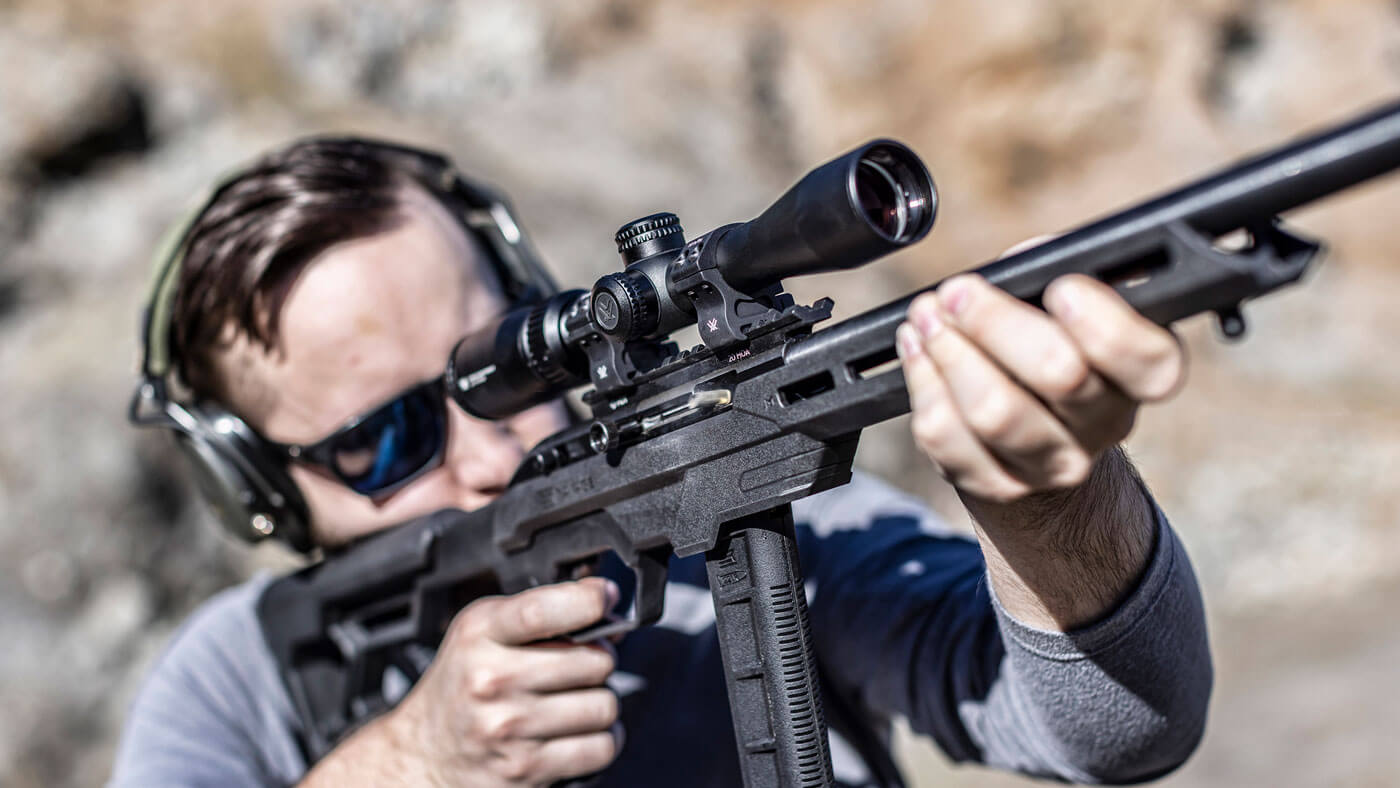
How It Works: Semi-autos are self-loading firearms that use the force of recoil or gas from a fired cartridge to cycle the bolt and chamber a fresh cartridge for the next shot. This allows repeated shots simply by pulling the trigger for each shot without the shooter needing to take additional steps to reload the chamber.
Feed Style: Magazine
Handedness: Right
Advantages: Quick cycling, magazine capacity, can be modular depending on the model
Safe Storage: Lock the bolt open
Lever Action
Lever action rifles are an iconic firearm type, widely associated with the Old West. They remain popular today for hunting and recreational shooting, offering a balance of speed and accuracy.
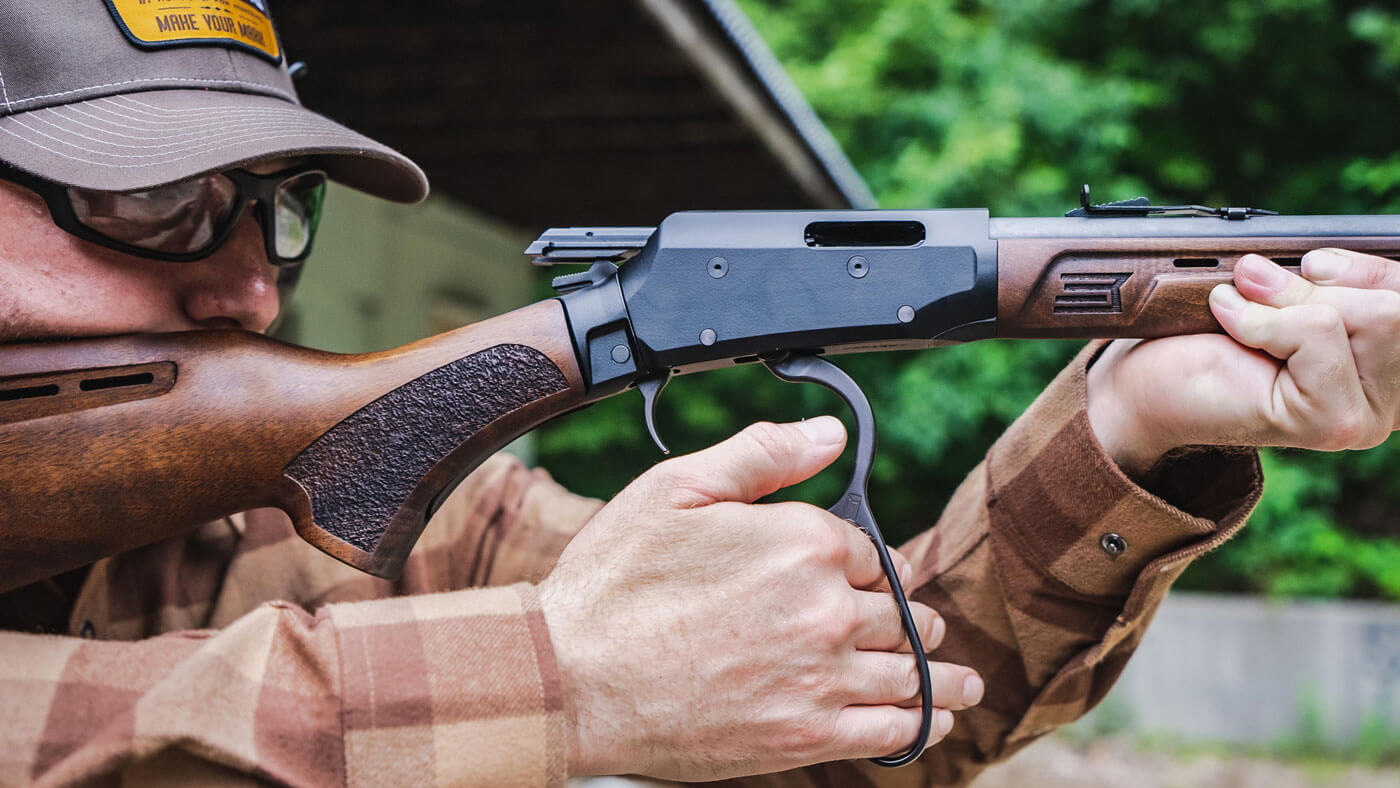
How It Works: The shooter operates a lever located beneath the trigger guard to eject the spent case and load a new cartridge from the magazine into the chamber. Lever actions are known for their smooth cycling and fast follow-up shots, making them well-suited for quick, close-range shooting.
Feed Style: Magazine tube
Handedness: Ambidextrous with right-side shell ejection
Advantages: Fast cycling, lightweight, compact design
Safe Storage: Open the action and clear the chamber before storage
Examples: Revel
Shotgun
Shotguns are a type of firearm designed to shoot multiple pellets (or shot) through a smooth bore barrel, typically at moving targets in the air like birds or clay targets. The way shotshells are moved into the chamber depends on what type of action it has.
Semi-Auto
Semi-auto shotguns tend to be the go-to shotgun for all-purpose shooting. While they have more parts and cleaning is a bit more involved than other shotgun action types, semi-autos are great for hunting and target shooting.
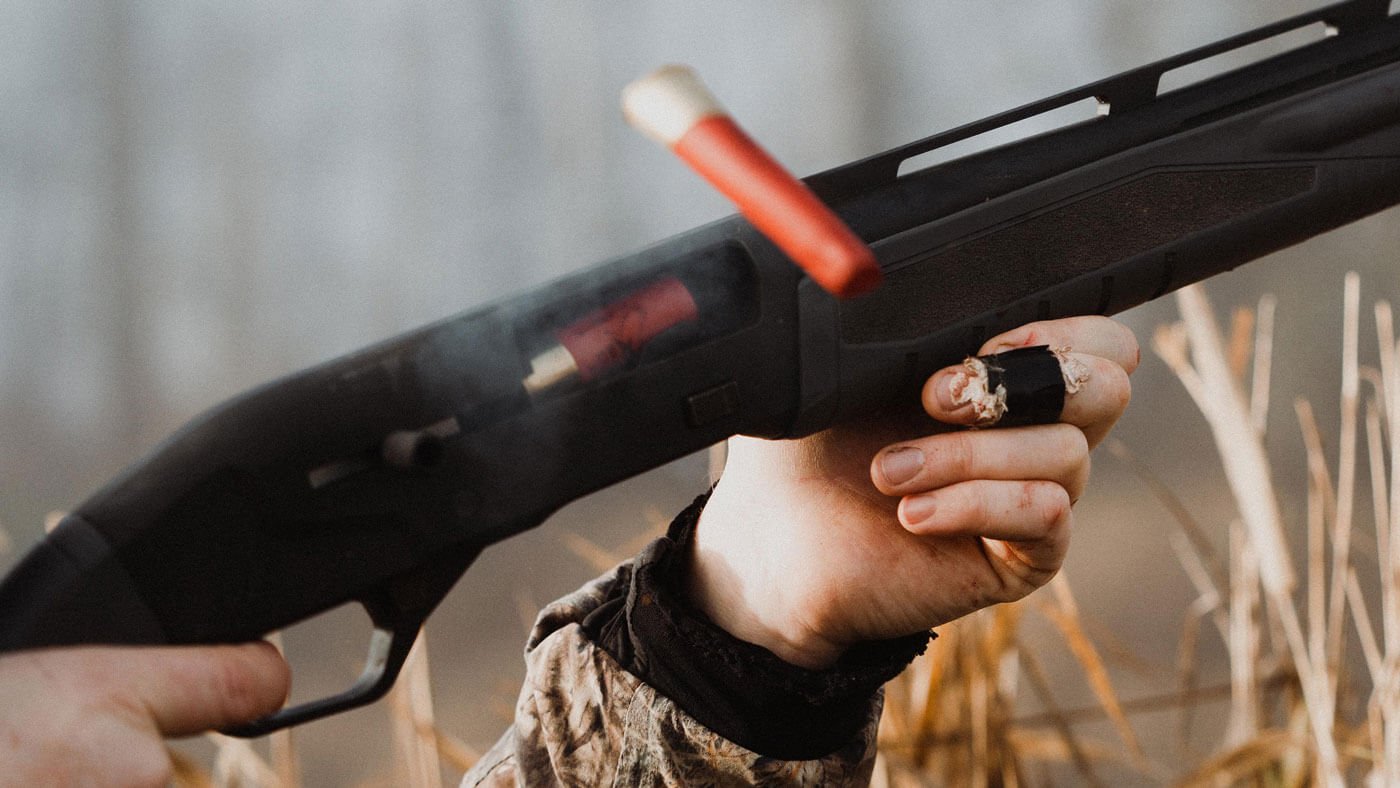
How It Works: Similar to rifles, semi-auto shotguns are self-loading firearms that use gas from a fired shotshell or the force of recoil (inertia) to chamber a new shell for the next shot. One shot shell is fired for each trigger pull.
Feed Style: Magazine tube
Handedness: Ambidextrous with right-side shell ejection
Advantages: Fast cycling for multiple shots, reduced felt recoil
Safe Storage: Lock the bolt open
Examples: Renegauge, Model 560
Pump
Pump action shotguns are highly regarded for their reliability. They’re famous for being able to withstand more than their fair share of abuse in the field. Unlike other types of shotguns that “prefer” certain shotshell loads, pump actions tend to shoot any shotshell equally well. Because of their reliability, pump actions are a popular choice for a home defense shotgun.

How It Works: Shotshells move in and out of the chamber by manually sliding the forend of the shotgun backward and forward.
Feed Style: Magazine tube
Handedness: Ambidextrous with right-side shell ejection
Advantages: Reliable, not picky about shotshell ammunition, easy maintenance, durable
Safe Storage: Lock the bolt open
Examples: Stevens 320
Break Action
Named for “breaking open” the action, break action shotguns can have a single barrel or double barrels arranged side by side or over/under. Break action shotguns can come with manual extractors, which require you to manually take out the shells after each shot, or ejectors that eject the shells automatically when the action is opened. Break actions are the go-to choice for upland bird hunters and clay target shooters.

How It Works: Barrel(s) is hinged open with a lever at the top of the rear of the receiver and the shotgun is rotated up to expose the breech to allow manual loading and unloading of cartridges
Feed Style: Shooter manually loads shells into a single barrel or double barrels
Handedness: Ambidextrous
Advantages: Simple compact design, reliability, not picky about shotshells, durable, lightweight
Safe Storage: Open the action to expose the breech
Examples: Stevens 555, Stevens 301
Bolt Action
Bolt action shotguns are the odd ball on this list, but Savage manufactures a special type of shotgun purpose-built for deer hunting with slugs and for turkey hunting.
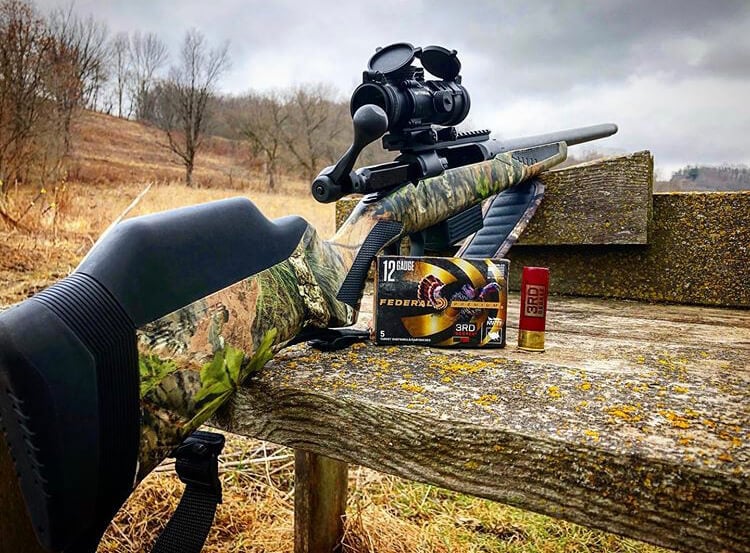
How It Works: Bolt action shotguns work the same as bolt action rifles. Shotshells move in and out of the firearm’s chamber by manually turning a bolt and sliding it back. They require four manual motions to completely cycle the bolt – pull the bolt handle upward and backward to extract the spent case, then push the bolt handle forward and down to load a new shell.
Feed Style: Magazine
Handedness: Right or left
Advantages: Accuracy, easy to maintain and clean
Safe Storage: Remove the bolt
Examples: 212/220 Slug, 212/220 Turkey
Understanding firearm action types is key to selecting the right firearm for your needs, whether for hunting, target shooting, or recreation. Each action type has unique benefits, from the precision of bolt actions to the fast cycling of lever actions and semi-autos. Familiarizing yourself with these differences helps ensure you choose the right firearm for your shooting style and situation. Every action type brings something distinct to the table, enhancing your overall shooting experience.

